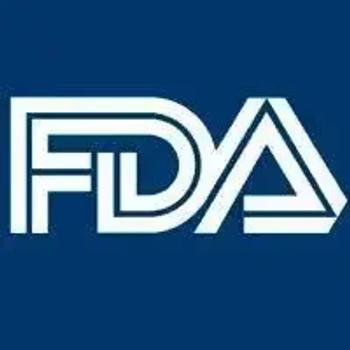
FDA approves mitomycin intravesical solution for recurrent LG-IR-NMIBC
Key Takeaways
- Mitomycin for intravesical solution is the first FDA-approved treatment for recurrent LG-IR-NMIBC, with availability expected by July 2025.
- The phase 3 ENVISION trial demonstrated a 78% complete response rate at 3 months and an 80.6% rate at 18 months.
The approval is supported by findings from the phase 3 ENVISION trial.
On June 12, 2025, the FDA approved mitomycin for intravesical solution (Zusduri; formerly UGN-102) for the treatment of adult patients with recurrent low-grade intermediate-risk non–muscle invasive bladder cancer (LG-IR-NMIBC), the agency announced in a news release.1
This approval marks the first FDA-approved medication in this disease setting. Mitomycin for intravesical solution is expected be available in the US on or around July 1, 2025, UroGen reported.2
According to the FDA, the recommended dose for the therapy is 75 mg (56 mL) instilled once weekly for 6 weeks into the bladder via a urinary catheter.
"ZUSDURI marks a breakthrough in uro-oncology, offering a new alternative for recurrent LG-IR-NMIBC patients who can live for many years with the disease but often endure multiple resections under general anesthesia,” said Sandip Prasad, MD, MPhil, director of genitourinary surgical oncology at Morristown Medical Center/Atlantic Health System, New Jersey, in a news release from UroGen.2 “For decades, TURBT has been the standard approach for bladder cancer treatment. That’s why innovative treatments like ZUSDURI are essential, especially for those adult patients with recurrent low-grade, intermediate-risk NMIBC.”
The approval is primarily supported by findings from the phase 3 ENVISION trial (NCT05243550), which met its primary end point by demonstrating a 78% (95% CI, 72 to 83) complete response rate in patients with LG-IR-NMIBC at 3 months following the first instillation of the therapy. The duration of response (DOR) ranged from 0 months to over 25 months. Overall, 79% of responders remained in CR at 12 months.
Data presented at the 2025 American Society of Clinical Oncology Annual Meeting in Chicago, Illinois,3,4 additionally showed an 18-month CR rate of 80.6% (95% CI, 74.0 to 85.7).
Regarding safety, the most common treatment-emergent adverse events (TEAEs) reported in the trial included dysuria, hematuria, urinary tract infection, pollakiuria, and fatigue. Serious adverse events were reported in 12% of patients. These included urinary retention (0.8%) and urethral stenosis (0.4%).
Overall, the single-arm, multinational ENVISION trial evaluated the safety and efficacy of mitomycin as a primary chemoablative therapy in patients with LG-IR-NMIBC. In total, the study enrolled 240 adult patients across 56 sites in the US and Europe.
Patients were eligible for enrollment in the trial if they had a negative voiding cytology for high-grade disease within 8 weeks before screening, adequate organ and bone marrow function, and an anticipated life expectancy of at least the duration of the trial.5 Those included in the study received 6 once-weekly intravesical instillations of mitomycin.
The primary end point for the study was the complete response rate at 3 months following the first instillation of the therapy. Secondary outcome measures included DOR, durable complete response rate, disease-free survival, and safety.
The ENVISION trial is ongoing to assess the long-term safety and efficacy of mitomycin for intravesical solution as part of a post-marketing commitment with the FDA, UroGen noted.
The approval of mitomycin intravesical solution follows a
REFERENCES
1. FDA approves mitomycin intravesical solution for recurrent low-grade intermediate-risk non-muscle invasive bladder cancer. News release. US Food & Drug Administration. Published online and accessed June 12, 2025. https://www.fda.gov/drugs/resources-information-approved-drugs/fda-approves-mitomycin-intravesical-solution-recurrent-low-grade-intermediate-risk-non-muscle
2. U.S. FDA approves UroGen’s ZUSDURI (mitomycin) for intravesical solution as the first and only medication for recurrent low-grade intermediate-risk non-muscle invasive bladder cancer (LG-IR-NMIBC). News release. UroGen. Published online and accessed June 12, 2025. https://investors.urogen.com/news-releases/news-release-details/us-fda-approves-urogens-zusduritm-mitomycin-intravesical
3. Prasad SM, Mihaylov NV, Khuskivadze A, et al. Duration of response (DoR) following treatment with UGN-102 in patients with recurrent, low-grade, intermediate-risk, non-muscle invasive, bladder cancer: 18-month DoR data from the phase 3 ENVISION trial. J Clin Oncol. 2025;43 (suppl 16). https://doi.org/10.1200/JCO.2025.43.16_suppl.4598
4. UroGen announces updated 18-month duration of response (DOR) of 80.6% from the phase 3 ENVISION trial of UGN-102, an investigational treatment for recurrent low-grade intermediate-risk non-muscle invasive bladder cancer (LG-IR-NMIBC). News release. UroGen. April 26, 2025. Accessed June 12, 2025. https://www.businesswire.com/news/home/20250426951270/en/UroGen-Announces-Updated-18-Month-Duration-of-Response-DOR-of-80.6-from-the-Phase-3-ENVISION-Trial-of-UGN-102-an-Investigational-Treatment-for-Recurrent-Low-Grade-Intermediate-Risk-Non-Muscle-Invasive-Bladder-Cancer-LG-IR-NMIBC
5. A phase 3 single-arm study of UGN-102 for treatment of low grade intermediate risk non-muscle-invasive bladder cancer (ENVISION). ClinicalTrials.gov. Last updated July 12, 2024. Accessed June 12, 2025. https://clinicaltrials.gov/study/NCT05243550
Newsletter
Stay current with the latest urology news and practice-changing insights — sign up now for the essential updates every urologist needs.















